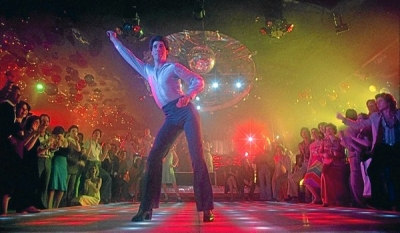
Disco, beat-driven style of popular music that was the preeminent form of dance music in the 1970s. Its name was derived from discotheque, the name for the type of dance-oriented nightclub that first appeared in the 1960s.
Initially ignored by radio, disco received its first significant exposure in deejay-based underground clubs that catered to black, gay, and Latino dancers. Deejays were a major creative force for disco, helping to establish hit songs and encouraging a focus on singles: a new subindustry of 12-inch, 45-rpm extended-play singles evolved to meet the specific needs of club deejays. The first disco qua disco hit was Gloria Gaynor’s “Never Can Say Goodbye” (1974), one of the first records mixed specifically for club play. While most of disco’s musical sources and performers were African American, the genre’s popularity transcended ethnic lines, including both interracial groups (e.g., KC and the Sunshine Band) and genre-blending ensembles (e.g., the Salsoul Orchestra).
As disco evolved into its own genre in the United States, its range of influences included upbeat tracks from Motown, the choppy syncopation of funk, the sweet melodies and polite rhythmic pulse of Philadelphia soft soul, and even the most compelling polyrhythms of nascent Latin American salsa. Its lyrics generally promoted party culture. As the dance-floor mania developed into a more upscale trend, the cruder sensuality of funk was eclipsed by the more polished Philadelphia sound and the controlled energy of what came to be known as Eurodisco.
European disco—rooted in Europop, with which it is largely synonymous—evolved along somewhat different lines. In Europe producers such as (Jean-Marc) Cerrone (Love in C Minor) and Alec Costandinos (Love and Kisses) made quasi-symphonic disco concept albums, while Giorgio Moroder, working primarily at Musicland Studios in Munich, West Germany, conceived of whole album sides as a single unit and arrived at a formula that became the standard approach to European dance music in the 1980s and ’90s. These continental differences did not prevent intercultural collaborations such as that between Moroder and American singer Donna Summer, nor did they close off input from other sources: Cameroonian artist Manu Dibango’s “Soul Makossa,” first a dance-floor hit in Paris, helped usher in the disco era in 1973.
Credit : Britannica
Picture Credit : Google




